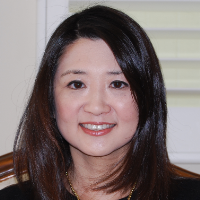Our Counselors Answered:
Does gender bias exist in college admissions?
 Patricia AviezerPresidentInside Track To College, Inc.
Patricia AviezerPresidentInside Track To College, Inc.
Does gender bias exist in college admissions?
Looking for a Few Good Men?
I don’t think I would call in gender bias, but Colleges and Universities across the country do try to “strike a balance” in the percentage of men and women on their campuses.
The National trends of males to females on college campuses has become very unbalanced. It is not unusual for colleges to quote ratios of 60% women to 40% men on campus. Why should this matter, you might ask? Gender balance in an environment like a college campus that is a 24/7, four-year learning experience is thought to enhance the educational as well as the social experiences of students on campus.
The concern that men are not accessing higher education at the same rate that women are has now become the object of research and initiatives to attract more men to college campuses. The obvious question for women becomes: “Will my grades and test scores need to be higher than my male counterpart to get into the same college?” Women, there’s a great question to ask during that college visit.
 Bill PrudenHead of Upper School, College CounselorRavenscroft School
Bill PrudenHead of Upper School, College CounselorRavenscroft School
Does gender bias exist in college admissions?
The concept of bias has a definite negative connotation and so this seems to be something of a loaded question in that way. Do schools take account of gender in making their admissions decisions? Yes. But to call it bias is of questionable value when it is one of countless factors—ethnic background, socio-economic background, co-curricular activities, individual skill set, course selection, test scores, the list goes one—that schools consider as part of a process aimed at getting as full a picture who that applicant is and in turn what they can bring to the community the admissions office is trying to create. That reality cannot be forgotten. Unless it is a women’s college where basic policy negates any need to consider gender, an applicant’s gender will always be among the many factors considered as schools seek to build the community that serves their mission and goals.
 Edward LaMeireCEOLaMeire College Consulting (lameirecollegeconsulting.com)
Edward LaMeireCEOLaMeire College Consulting (lameirecollegeconsulting.com)
Does gender bias exist in college admissions?
Yup. I think that the best example of this is MIT, which (according to their Common Data Set) admitted about 800 women and 880 men in 2010. So far so good…But they received over twice the number of male as female applicants! In short, it’s almost twice as easy to earn admission to MIT as a female than as a male.
This pattern continues at schools with dramatic gender imbalances. The flip side, of course, is the liberal arts college with a 70/30 female/male breakdown, where men are coveted.
Of course, diversity, multiculturalism, inclusivity, etc., are all huge buzzwords now, and everyone wants to have a representation of every perspective available. It’s just good business. If a school doesn’t have “enough” of you, you can rest assured that you’ll have an edge in admissions. So much of the application process, unfortunately, has turned into a business of trying to leverage any “minority” status that you have.
 Corey FischerPresidentCollegeClarity
Corey FischerPresidentCollegeClarity
Does gender bias exist in college admissions?
Using gender in the process is not allowed at public colleges, but at private colleges it will often be a factor. Most colleges prefer to stay as close to 50:50 male:female as possible. Thirty years ago, this favored women, now it favors men (more women are applying to college than men).
 Benjamin CaldarelliPartnerPrinceton College Consulting, LLC
Benjamin CaldarelliPartnerPrinceton College Consulting, LLC
Does gender bias exist in college admissions?
It exists primarily to try to provide some balance to lopsided departments. For instance there are much less female applicants claiming an interest in engineering or computer science. They would have an advantage over someone with a similar academic record. The same may be true for males in elementary education or social work.
 Patricia KrahnkePresident/PartnerGlobal College Search Associates, LLC
Patricia KrahnkePresident/PartnerGlobal College Search Associates, LLC
Biases Exist Everywhere There Are People
Short Answer:
I’ve rarely seen gender bias in admissions. But once a student is on campus, one sees gender bias (and discrimination) all over the place – in the classroom, in the residence halls, in athletics, in the staff, in the administration, in student activities.
Detailed Answer:
Every institution has occasional instances of gender bias and abuse. What you want to know is, How pervasive is it? If you want to know if a college supports an environment of gender equality (whether it’s male/female, LGBT, etc.), look carefully at the following:
1. Does the college have student groups that are active in their fight for gender equality? You will find this information in the student newspaper or online. If the group is active, it will appear as meetings on a calendar or in articles. Ask to speak with the President of the club. You can also ask the director of student life, but he/she may give you the politically correct answer that makes the institution look good.
At Oberlin it is clear that the institution has a mission to support gender equality; when you walk around campus, you see evidence as to this fact. Another example is Tulane, which has bathrooms that are strictly for transgendered students.
On the other side of the concern, Yale has recently been in the news regarding their lack of attention to reported sexual assaults. And Rutgers experienced the suicide of Tyler Clementi, despite the recent implementation of a campus-wide program intended to promote a civilized college environment. This is an example of how the news about an institution can affect your decision to attend.
2. Whether or not an institution actively promotes a college-wide acceptance of gender sensitivity (as opposed to a superficial representation of such) can only be determined by your closer examination of the college.
This is an area where making your college-of-interest one of your Google alerts can be very useful (meaning that you will receive in your email everything appearing in the news anywhere about any particular college.) If something happens on a certain campus regarding the areas in which you have concern, you will know about it.
3. Pay close attention to the attitude that is promoted during discussions about the first-year, including orientation and registration programs. Ask how the orientation program supports gender sensitivity and equality. Ask what the judicial mechanisms are for reporting incidents of gender bias or harassment. If they tell you they have a Tunnel of Oppression or some other gender and ethnic abuse game in which they require students to participate (as one college in New England had), you should consider this a warning sign. In this case, the college is more interested in appearing to promote tolerance than they are in protecting the recognized or unrecognized emotional and psychological traumas of its incoming students, young people about whom they truly know very little.
 Patricia KrahnkePresident/PartnerGlobal College Search Associates, LLC
Patricia KrahnkePresident/PartnerGlobal College Search Associates, LLC
Does gender bias exist in college admissions?
Short Answer:
I’ve rarely seen gender bias in admissions. But once a student is on campus, one sees gender bias (and discrimination) all over the place – in the classroom, in the residence halls, in athletics, in the staff, in the administration, in student activities.
Detailed Answer:
Every institution has occasional instances of gender bias and abuse. What you want to know is, How pervasive is it? If you want to know if a college supports an environment of gender equality (whether it’s male/female, LGBT, etc.), look carefully at the following:
1. Does the college have student groups that are active in their fight for gender equality? You will find this information in the student newspaper or online. If the group is active, it will appear as meetings on a calendar or in articles. Ask to speak with the President of the club. You can also ask the director of student life, but he/she may give you the politically correct answer that makes the institution look good.
At Oberlin it is clear that the institution has a mission to support gender equality; when you walk around campus, you see evidence as to this fact. Another example is Tulane, which has bathrooms that are strictly for transgendered students.
On the other side of the concern, Yale has recently been in the news regarding an alleged “hostile sexual environment.” And Rutgers experienced the suicide of Tyler Clementi, despite the recent implementation of a campus-wide program intended to promote a civilized college environment. This is an example of how the news about an institution can affect your decision to attend.
2. Whether or not an institution actively promotes a college-wide acceptance of gender sensitivity (as opposed to a superficial representation of such) can only be determined by your closer examination of the college.
This is an area where making your college-of-interest one of your Google alerts can be very useful (meaning that you will receive in your email everything appearing in the news anywhere about any particular college.) If something happens on a certain campus regarding the areas in which you have concern, you will know about it.
3. Pay close attention to the attitude that is promoted during discussions about the first-year, including orientation and registration programs. Ask how the orientation program supports gender sensitivity and equality. Ask what the judicial mechanisms are for reporting incidents of gender bias or harassment. If they tell you they have a Tunnel of Oppression or some other gender and ethnic abuse game in which they require students to participate (as one college in New England had), you should consider this a warning sign. In this case, the college is more interested in appearing to promote tolerance than they are in protecting the recognized or unrecognized emotional and psychological traumas of its incoming students, young people about whom they truly know very little.
 Nina BerlerFounderunCommon Apps
Nina BerlerFounderunCommon Apps
Gender Bias
I remember the former days of college admissions, when some colleges had not long been coed and when males constituted the bulk of applicants. In those cases, colleges did not fail to mention that there were quotas relative to one gender or another (in my case, not in favor of women). True, things have changed dramatically so that colleges do not overtly show gender bias. Nevertheless, many colleges are not at a 50:50 ratio these days. (In many cases, women constitute well over half of the existing student population.) As a result, students should be aware that gender is considered to a certain extent in the admissions decision. I am very careful about parents and students having unreasonable expectations in that regard, however. One never knows what will happen in a given year.
 Helen H. ChoiOwnerAdmissions Mavens
Helen H. ChoiOwnerAdmissions Mavens
Bias? No, but schools like a balance….
As you flip through your guidebooks, you might notice that in many schools, there seems to be more young women than young men in the entering freshmen class. In instances where there are significantly more female students than male students, I think that some schools are somewhat sensitive about an applicant’s gender to a small extent. Remember — schools are interested in compiling a well-rounded student community — and that means a relatively equal distribution of female and male students.
On the flip side, you might notice that in some science/engineering colleges, there are decidedly more women than men. Does being a women benefit you in those instances? I don’t think so or else there would be tons more women admitted, right? However, in cases where the admissions committee members are ‘on the fence” about an applicant — gender might be one of the deciding factors.
 Helen H. ChoiOwnerAdmissions Mavens
Helen H. ChoiOwnerAdmissions Mavens
Bias? No, but schools like a balance….
As you flip through your guidebooks, you might notice that in many schools, there seems to be more young women than young men in the entering freshmen class. In instances where there are significantly more female students than male students, I think that some schools are somewhat sensitive about an applicant’s gender to a small extent. Remember — schools are interested in compiling a well-rounded student community — and that means a relatively equal distribution of female and male students.
On the flip side, you might notice that in some science/engineering colleges, there are decidedly more men than women. Does being a women benefit you in those instances? Not really. I don’t think so or else there would be tons more women admitted, right? However, in cases where the admissions committee members are ‘on the fence” about an applicant — gender might be one of the deciding factors when the admissions staff is putting together a cohesive class.
 Lily TrayesFounder and CEOIvy League Placement
Lily TrayesFounder and CEOIvy League Placement
Does gender bias exist in college admissions?
Here is my video response to the question.
 Carita Del ValleFounderAcademic Decisions
Carita Del ValleFounderAcademic Decisions
Does gender bias exist in college admissions?
Yes it does. Each campus has their own ideas about what makes a high quality freshman class. For some it can mean more men because there are to many women attending, for others it is more minorities and then of course geography plays into this process as well.
Why does it all matter? Plain and simply it’s variety that adds to the discussions in class (us West Coast folks see things very differently from those on the South), a different dynamic on campus from a Iowa farmer kid to a city life New Yorker, different types of education experiences from high schools around the country, and new social, political and religious perspectives that brings new life into any college campus.
 Annie ReznikCounselor/CEOCollege Guidance Coach
Annie ReznikCounselor/CEOCollege Guidance Coach
Does gender bias exist in college admissions?
The effort to achieve balanced male/female enrollment ratios has been viewed by some as gender bias. Presently, women far outpace men in college application and matriculation which makes achieving a gender balanced class a challenge for all colleges and universities. Most colleges and universities recognize the value of classroom diversity for improved learning outcomes. And, families seeking a collegiate environment actively seek gender balance.
 Alan Duesterhaus
Alan Duesterhaus
Does gender bias exist in college admissions?
Yes, although you are not likely to hear about it much. It is driven by the fact that there are more women going to college (~60%) versus men (~40%). Most colleges ideally would like to have their student body split evenly between women and men. As a result, it is typically easier for a man to be admitted to an institution versus a woman if everything else is equal.
Since this is something you have little control over I would encourage you to focus your energies on honing your essay, improving your grades, enhancing your leadership skills, and preparing for the SAT or ACT.
Best wishes for your college search.
 Reecy ArestyCollege Admissions/Financial Aid Expert & AuthorPayless For College, Inc.
Reecy ArestyCollege Admissions/Financial Aid Expert & AuthorPayless For College, Inc.
Does gender bias exist in college admissions?
Naturally, but not as much as in the past & ethnic bias as well – don’t kid yourself into thinking that college is a perfect world!









